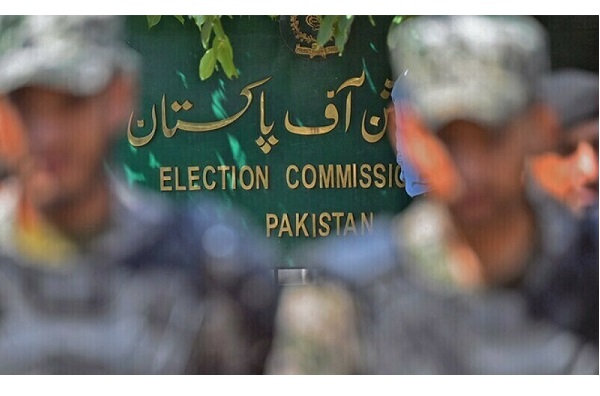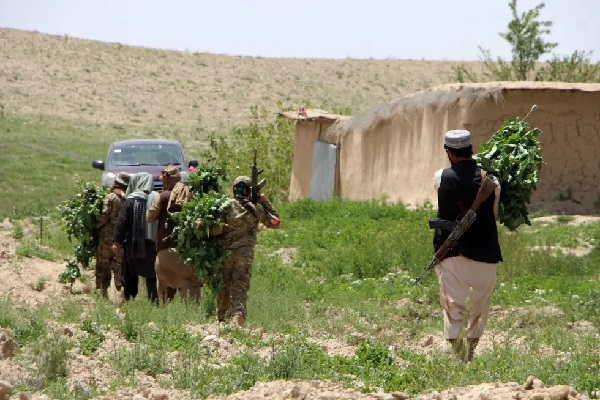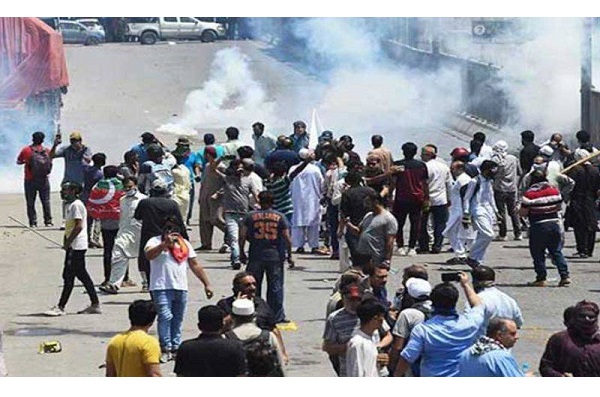ISLAMABAD: The Afghan interim government announced the formation of a committee on Sunday to probe violent clashes that left two
ISLAMABAD: A list of preliminary delimitations published by the Election Commission of Pakistan (ECP) on Wednesday rearranged electoral districts across the country in light of the 2023 digital census, clubbing dozens of districts to rationalise the population of constituencies, as well as reshuffling the number of national and provincial assembly seats allocated to various districts.
The ECP decision is being termed as a significant step towards the conduct of general elections, likely to be held in the first month of the next year. However, speculations continue on the fate of the polls, with many claiming the exercise could be delayed by at least a year, on one pretext or the other.
The preliminary proposals were earlier scheduled to be published on Oct 9, but on the demand of political parties, the timeline for the delimitation exercise was curtailed by 14 days to complete the process by Nov 30, instead of Dec 14. Similarly, it was also decided at the time to complete preliminary delimitation by Sept 26 and publish the list the following day.
In Khyber Pakhtunkhwa, provincial assembly seats in Swat and Shangla increased in light of an increase in the population.
“The number of provincial assembly seats in Swat district increased from seven to eight…on the basis of total district population [of] 2,687,384,” the ECP said, adding that the basic principles of delimitation such as contiguity, compactness, public convenience and avoiding unnecessary splitting of administrative units were stringently adhered to during the carving out of a new seat.
In Shangla, the number of PA seats for the district increased from two to three according to the revised share on the basis of an increase in population as per the latest census.
Furthermore, District Chitral Upper, having a seat share of 0.22, being insufficient for one seat, was clubbed with Chitral Lower having a seat share of 0.35 in an inter-district constituency.
“Both the above districts separately have insufficient share required for an independent seat. The said districts were created from one single district erstwhile Chitral,” the ECP added.
Kohistan Upper District having a share of 0.47, being insufficient for a seat, clubbed with the District Kohistan Lower having a share of 0.37 and Kolai Palas having a share of 0.31, the ECP added. “In the past, Kohistan was one district comprising the areas of above mentioned three districts. As such the clubbing is quite natural,” it added.
Mansehra District with a share of 1.98 and Torghar having share of 0.22 have been clubbed as Torghar District was not eligible for one independent seat. Likewise, Torghar District was previously part of Mansehra. The district of South Waziristan has recently been bifurcated into two districts – South Waziristan Upper and South Waziristan Lower.
“…this clubbing is quite natural keeping in view the previous administrative arrangements. Both districts, having insufficient population for a National Assembly, have a commonality of language, culture and traditions. Hence, the most suitable and convenient option of clubbing both the districts in one National Assembly constituency was adopted.”
Tank has also been merged with DI Khan to rationalise the population in an inter-district constituency.
Hangu and Orakzai districts have been given one combined NA seat due to inadequate population for an independent seat for Orakzai district, said the election watchdog, adding that Orakzai could not be conveniently clubbed with any other district except Hangu.
Since no constitutional amendment can be made to increase or decrease the total number of seats in the legislatures due to the lack of an elected parliament, the total number of seats within the national and provincial assemblies would remain the same.
Although the previous National Assembly consisted of 342 seats, it should be remembered that the 25th Amendment, under which the erstwhile tribal areas were merged into KP, 12 NA seats of Fata were abolished and six were allocated to KP, bringing the total number of seats in the National Assembly down to 336. This is also the figure that the current delimitation plan arrives at.
In addition, there are 60 seats reserved for women and 10 have been reserved for non-Muslims. Punjab holds the majority of 141 seats in NA, followed by Sindh with 61, KP with 45, Balochistan with 16, and Islamabad with 3.
In the provincial assembly constituencies, figures show that Punjab leads with a total population of 127,688,922, followed by Sindh with 55,696,147, Khyber Pakhtunkhwa with 40,856,097, and Balochistan with 14,894,402.
As per the delimitation report the methodology for calculating share of seats in the national and provincial assemblies was described thus: “The population of the province/area has been divided by the total number of general seats and the average population or quota per National Assembly seat was obtained. Similarly, the population of a province was divided by the total number of general seats allocated to the provincial assembly to obtain a quota per seat.”
“In calculating the total number of seats, a fraction of 0.5 and above was generally taken as one seat and a fraction below 0.5 was ignored. Due to the peculiar situation in Balochistan, more than one district has been clubbed. Similarly, few clubbings have also been made in other provinces where necessary,” it said.
In Punjab, the newly created districts of Talagang and Murree were clubbed with their former administrative centres to rationalise the population of their constituencies. According to the ECP, “Due to the low share of District Murree, it could not obtain an independent seat. Consequently, it is clubbed with District Rawalpindi to achieve population parity.”
Similarly, Talagang was previously part of Chakwal and during delimitation, both districts were clubbed to rationalise the population.
The election watchdog also rationalised the population of Hafizabad district in Punjab, which has the highest population, 1,319,909, in Punjab as compared to the average quota of the province i.e. 905,595.
In order to rationalise the population, a chunk of the population of district Hafizabad was clubbed with district Gujranwala “in light of ground realities”, added the ECP. The ECP said this clubbing was natural “because Hafizabad was previously part of Gujranwala”.
But even though the clubbed entity qualifies for seven NA seats, only six have been allocated to it.
According to the ECP, the publication of the preliminary constituencies will continue for 30 days from Sept 27 to Oct 26. It said objections (representations) to the preliminary constituencies can be made by the voters of the concerned constituency.
The representations, the ECP stated, should be addressed to the commission’s secretary and be submitted to the ECP Secretariat in Islamabad by Oct 27. “The ECP will take decisions on these representations from Oct 28 to Nov 26 after hearing the positions of the respective parties.”
Listing the procedure of submitting representations, the commission said they should be submitted by a voter of the concerned constituency in the form of a “memorandum” and entail the signatures of the voter. It said eight copies of the representations and constituency maps were required to be submitted. “Representations by courier, post and fax etc. will not be accepted,” the commission added.
You May Also Like
ISLAMABAD: The Pakistan Tehreek-i-Insaf (PTI) has finalised its plan to observe the anniversary of May 9 mayhem by holding rallies across
PESHAWAR: Khyber Pakhtunkhwa Chief Minister Ali Amin Gandapur on Sunday discounted the oath-taking ceremony of the new






